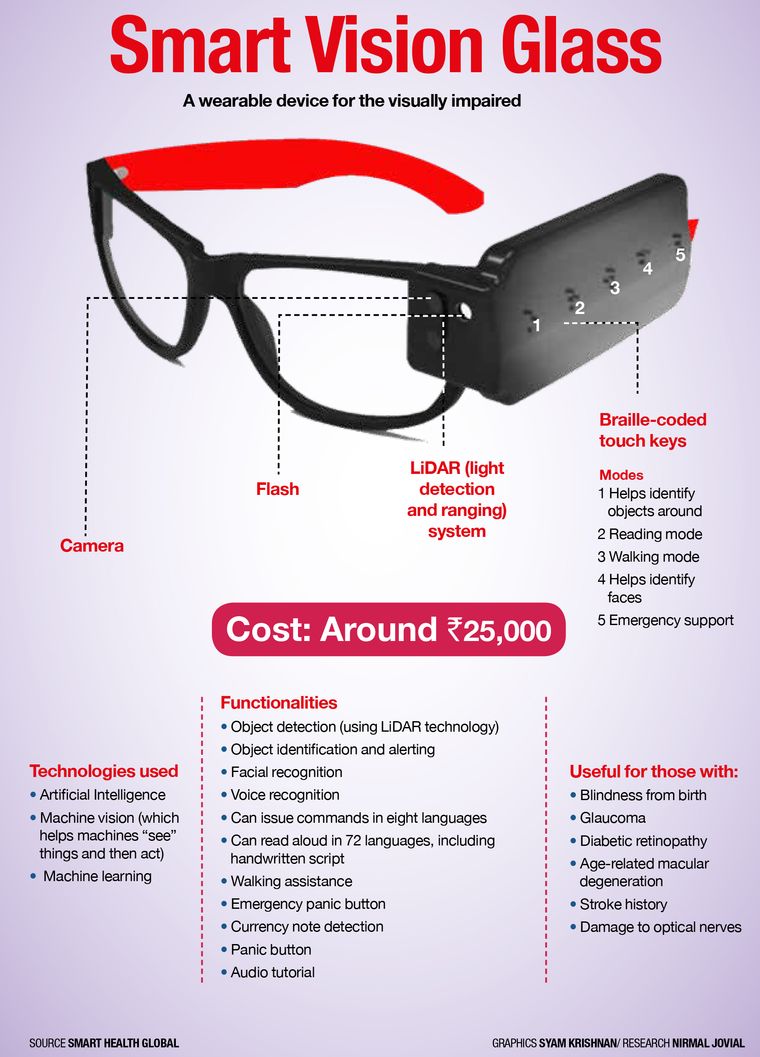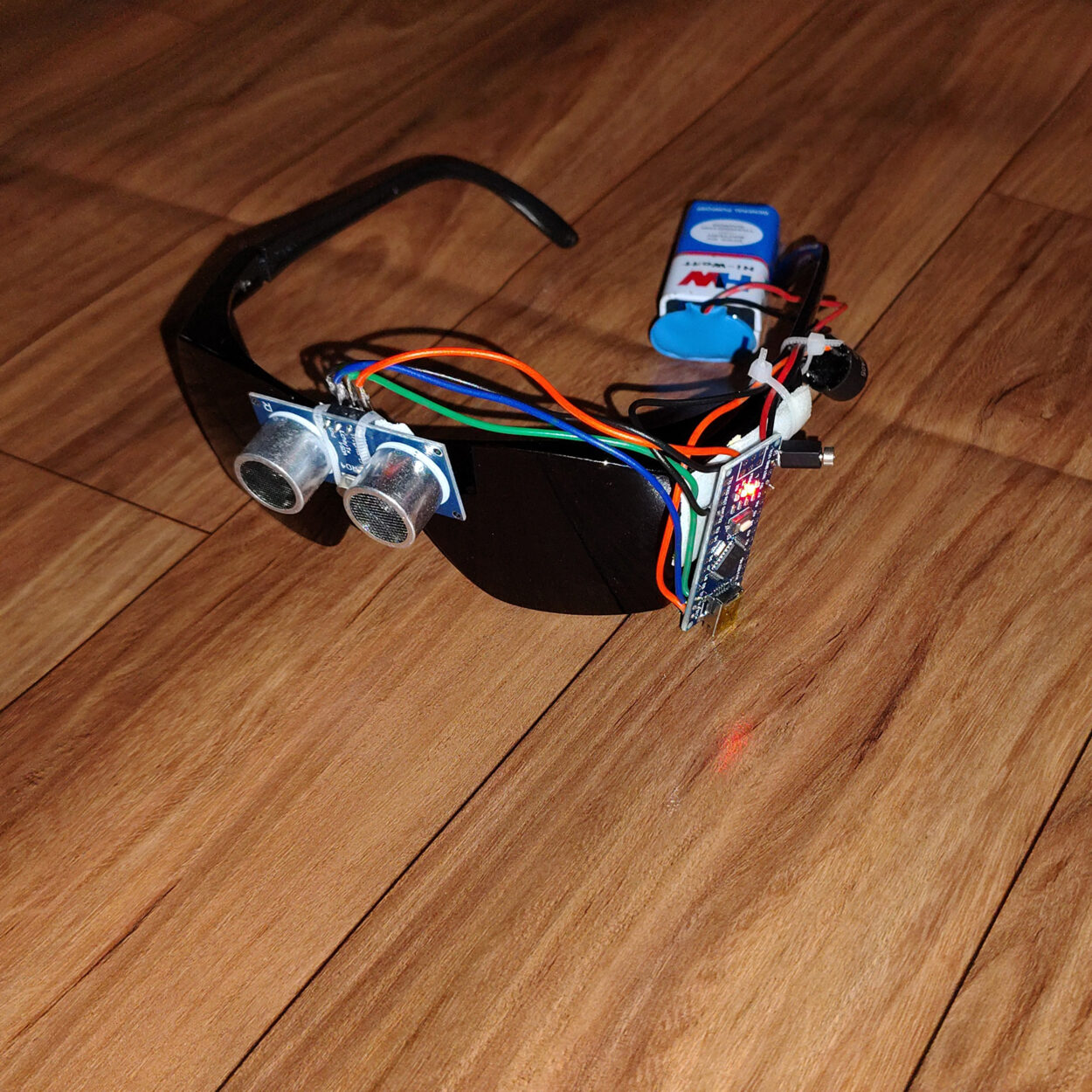AI-Powered Visual Aids: The Next Step in Assistive Technology for the Blind
AI-Powered Visual Aids: The Next Step in Assistive Technology for the Blind
Blog Article
Empowering Independence With Assistive Innovation for the Blind
The assimilation of assistive modern technology for people who are blind or aesthetically damaged stands for a substantial advancement in fostering self-reliance and enhancing lifestyle. With a series of tools-- from display visitors to ingenious tactile tools-- these modern technologies not only facilitate navigating and interaction yet likewise advertise social addition and engagement in different aspects of life. As we explore the varied kinds of assistive tools and their real-world applications, it comes to be clear that the influence is extensive. Yet, the evolution of this innovation raises essential concerns about ease of access and future advancements that necessitate more examination. Assistive technology for the blind.
Recognizing Assistive Innovation
Although assistive modern technology has actually developed significantly over the years, its fundamental function remains the exact same: to boost the lifestyle for people with impairments, especially those who are visually damaged or blind. This innovation encompasses a wide array of tools and devices that assist in independence and capability in day-to-day tasks.
Assistive technology can be categorized right into modern and low-tech solutions, each made to satisfy details needs. Sophisticated devices often consist of software applications, specialized equipment, and adaptive gadgets that make use of advanced technology to supply assistance in different contexts. On the other hand, low-tech solutions might include daily products that are customized to improve accessibility, such as magnifiers or responsive pens.
The assimilation of assistive modern technology into the lives of individuals who are blind or visually impaired not just advertises autonomy yet also cultivates social addition and involvement in instructional and professional atmospheres. By leveraging these technologies, users can navigate their surroundings, access info, and communicate successfully, thus boosting their overall lifestyle. Understanding assistive technology is essential for caretakers, professionals, and supporters that aim to sustain people in optimizing their prospective and attaining better independence.
Kinds Of Assistive Instruments
Assistive gadgets for the visually damaged and blind are important tools that enhance daily obeying dealing with particular challenges experienced by individuals. These devices can be extensively categorized into 3 primary kinds: optical devices, electronic gadgets, and sensory devices.
Sensory devices, such as Braille display screens and tactile maps, provide different ways to obtain info. Braille presents convert digital message into Braille, allowing customers to check out touch. Tactile maps supply spatial understanding with increased appearances and lines, enabling better environmental awareness.
With each other, these assistive gadgets equip people with visual disabilities to engage more fully with their environments, advertising better self-reliance and self-confidence in daily activities.

Effect On Every Day Life
The integration of assistive technology into the every day lives of individuals that are aesthetically damaged or blind substantially enhances their capacity to navigate and communicate with the world around them. Tools such as display readers, Braille shows, and mobile applications assist in accessibility to details, allowing customers to engage with digital material, communicate efficiently, and take care of daily tasks individually.
Furthermore, modern technologies like wise glasses and navigating applications give real-time help in unknown settings, enhancing mobility and confidence. These tools make it possible for individuals to identify obstacles, read indications, and also recognize faces, thus cultivating a feeling of autonomy in public areas. Additionally, home automation systems, which can be controlled through voice commands, enable individuals to handle their living atmospheres a lot more effectively, boosting convenience and safety.
The influence of assistive innovation extends beyond sensible tasks; it advertises social addition and emotional health. By connecting the space between individuals and their environments, these modern technologies equip individuals to get involved totally in area activities, go after educational opportunities, and engage in significant relationships. Ultimately, the find more development of assistive innovation contributes in redefining the opportunities for people that are aesthetically damaged or blind, resulting in a more accessible and comprehensive culture.
Success Stories and Testimonials

An additional effective testimony originates from Mark, a current university graduate who used display reading software application throughout his academic journey. This innovation allowed him to access program products and get involved in conversations, inevitably bring about his effective change into the workforce. Mark credit histories assistive innovation for encouraging him to accomplish his occupation goals, stressing its role in leveling the playing field for people with visual problems.
In addition, recreation center have actually reported boosted participation in their programs thanks to the introduction of accessible digital platforms. These platforms have made it simpler for people to attach, share resources, and assistance one another. These success stories collectively underscore the extensive result of assistive technology in fostering freedom, boosting lifestyle, and damaging down obstacles for the blind and aesthetically impaired neighborhood.
Future Patterns in Assistive Technology
Arising technologies are positioned to transform the landscape of assistive technology for individuals who are blind or visually damaged. Innovations in expert system (AI) and equipment knowing are boosting the abilities of devices, enabling more user-friendly customer experiences. For example, AI-driven applications are increasingly able to acknowledge things and read text out loud in real-time, supplying individuals with valuable information regarding their surroundings.
Furthermore, improvements in wearable innovation are developing brand-new chances for independence. Smart glasses equipped with enhanced fact functions can overlay vital information onto the individual's area of vision, helping with navigating and interaction with the atmosphere. Moreover, the combination of Internet of Things (IoT) tools is streamlining ease of access in smart homes, permitting users to regulate home appliances and receive notifications with voice commands or tactile user interfaces.
The growth of braille display screens and responsive feedback systems is additionally growing, promoting accessibility to digital content and improving interaction. As these modern technologies proceed to develop, they promise to improve day-to-day living, educational opportunities, and work prospects for individuals with visual problems. Constant cooperation between technologists, users, and advocacy groups will certainly be crucial in guaranteeing these advancements meet the demands of the area efficiently.
Final Thought
To conclude, assistive technology plays a crucial duty in boosting the freedom of people who are aesthetically impaired or blind. By offering necessary tools and resources, these innovations assist in enhanced accessibility, navigating, and communication to details, thus cultivating freedom and self-confidence. The transformative effect of assistive gadgets not only promotes reliable interaction with the atmosphere however likewise urges social addition and contact lens exam involvement in numerous elements of life, ultimately equipping users to thrive within their neighborhoods.
The integration of assistive technology for people that are blind or aesthetically damaged represents a considerable development in promoting independence and enhancing quality of life.The assimilation of assistive modern technology right into the lives of people who are blind or aesthetically impaired not just advertises autonomy however likewise fosters social inclusion and involvement in academic and professional settings. Ultimately, the advancement of assistive modern technology is crucial in redefining the opportunities for people who are blind or aesthetically click over here now damaged, leading to an extra inclusive and available culture.
Numerous individuals who are aesthetically damaged or blind have shared motivating success stories that highlight the transformative influence of assistive modern technology on their lives.In verdict, assistive technology plays a pivotal function in improving the self-reliance of people that are aesthetically damaged or blind.
Report this page